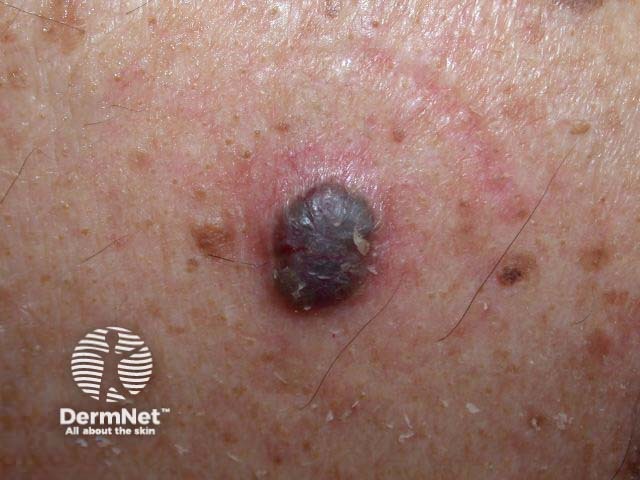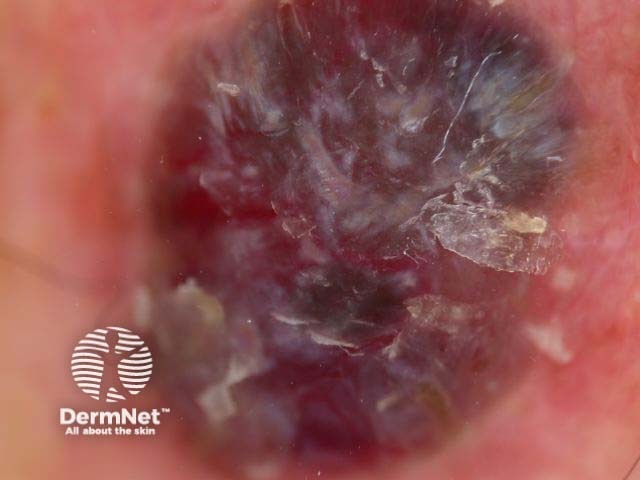Main menu
Common skin conditions

NEWS
Join DermNet PRO
Read more
Quick links
Blue skin lesions may be due to melanocytic lesions, vascular lesions or exogenous pigment. Dermoscopy may be useful to distinguish them.
Melanin is normally a brown colour. Melanocytic lesions tend to be blue in colour if the melanin is located within the dermis. They may be congenital (e.g., mongolian spot) or acquired.
For each of the seven cases, study the image(s) and then answer the questions. You can click on the image to view a larger version if required.
Each case should take approximately 2 minutes to complete. There is a list of suggested further reading material at the end of the quiz.


Name this blue-coloured skin lesion.
Basal cell carcinoma
Describe the dermoscopic features
Basal cell carcinoma often has flecks of blue colour (melanin). This basal cell carcinoma was clinically thought to be nodular melanoma. It was somewhat scaly, slightly ulcerated and shiny.
Dermoscopy isn’t always easy – it was non-diagnostic in this case; the red colour is probably vascular, and the darker colour melanin. More typical pigmented basal cell carcinomas often have linear and arborising telangiectasia, leaf-like areas on the periphery of the lesion, blue ovoid blotches, blue-grey globules and focal ulceration on dermoscopy.